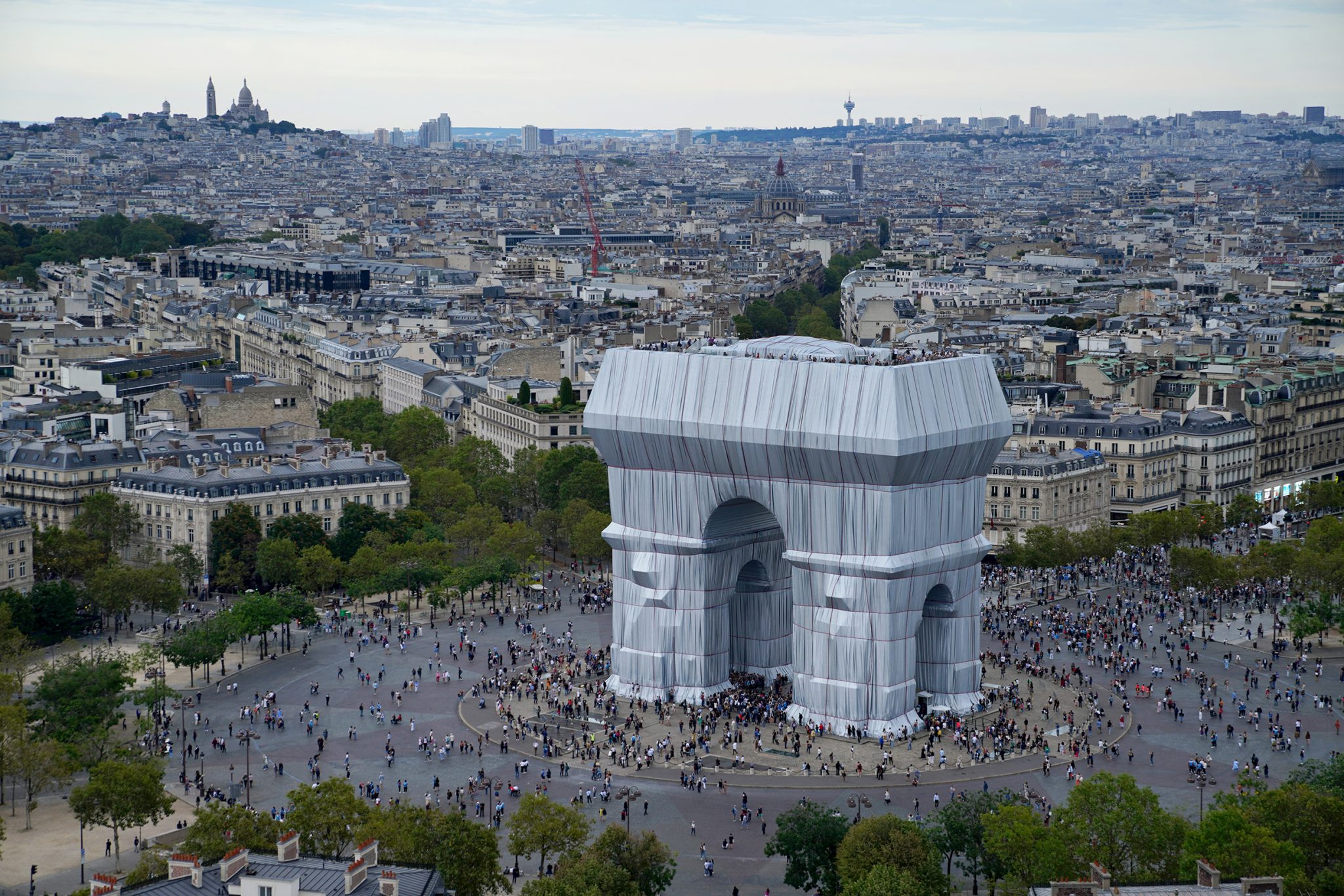There’s something futile in the expenditure of energy incarnated in this big shiny rectangular block, this chocolate nestling in the over-expensive box that Paris has become
The Arc de Triomphe is a monument consecrated by Napoleon to ‘perpetuate the memory of the French Army’s victories’. The artists Christo and Jeanne-Claude have wrapped it, posthumously: Christo died last year, and Jeanne-Claude in 2009. The project dates from 1961, three years after the two artists met: ‘the realisation of a dream of 60 years’, president Emmanuel Macron declared, inaugurating it in the company of Anne Hidalgo, mayor of Paris and candidate in next year’s presidential election, and Michael Bloomberg, former mayor of New York. Macron was also at pains to make clear that this pharaonic and ephemeral project hasn’t cost taxpayers a thing: it was financed by private funds, among them proceeds from the sale at auction of works by the two artists, for €14 million.
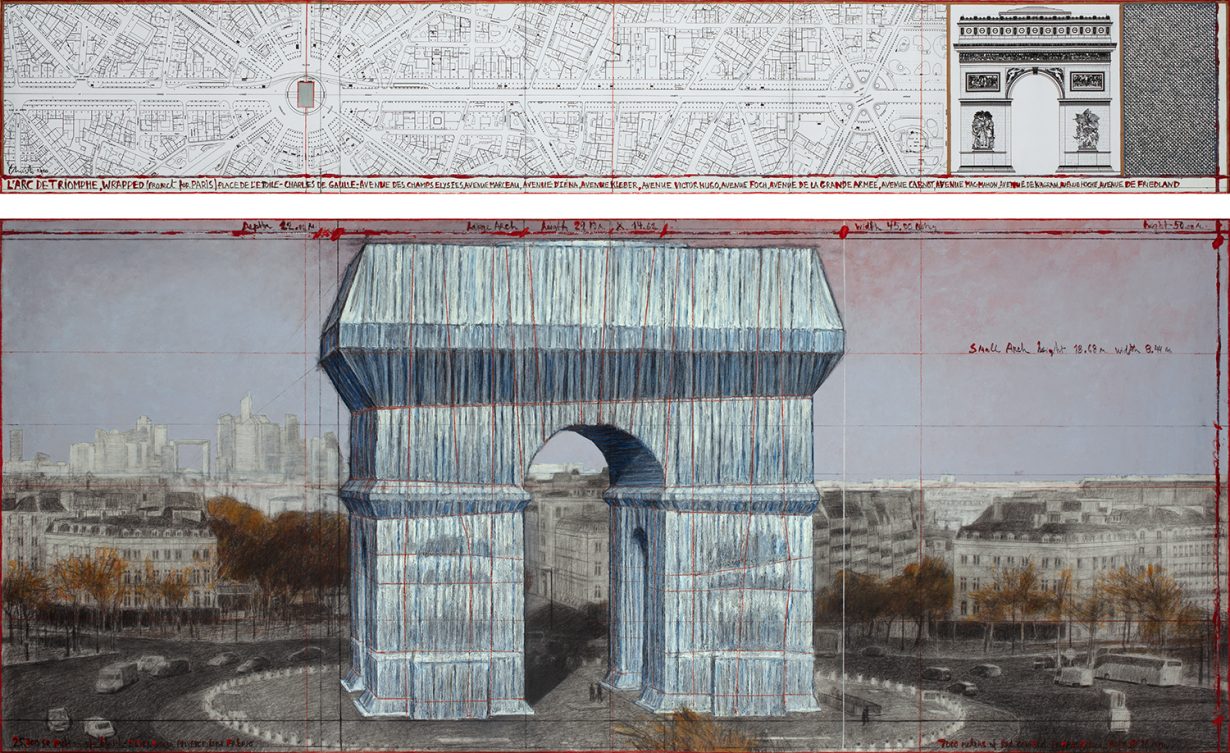
Drawing, 2020, in two parts. Pencil, charcoal, pastel, wax crayon, enamel paint, architectural drawing, map, and fabric sample. Property of the Estate of Christo V. Javacheff; photo: André Grossmann; © 2020 Christo and Jeanne-Claude Foundation
First, scaffolding was installed to protect the stone bas-reliefs, after which 95 steeplejacks deployed 25,000sqm of fabric held by 3km of red rope. Their aerial ballet was followed day after day on social networks and in the media, sparking a national debate, albeit one far less inflamed that those of the 1970s and 80s, when Renzo Piano raised the Centre Pompidou’s coloured pipes in the heart of the city of Paris (1977), or when Daniel Buren placed his striped columns in the courtyard of the Palais Royal (1986)… It’s as if contemporary art is now part of the landscape. Or maybe it’s that the traumas of COVID-19 and the Notre Dame fire affected public consciousness far more powerfully than this gesture by Christo and Jeanne-Claude – a nice touch that elegantly matches the luxurious avenues radiating out from the Arc: the Champs Elysées, Avenue Marceau and its luxury hotels, Avenue Foche and its palace.
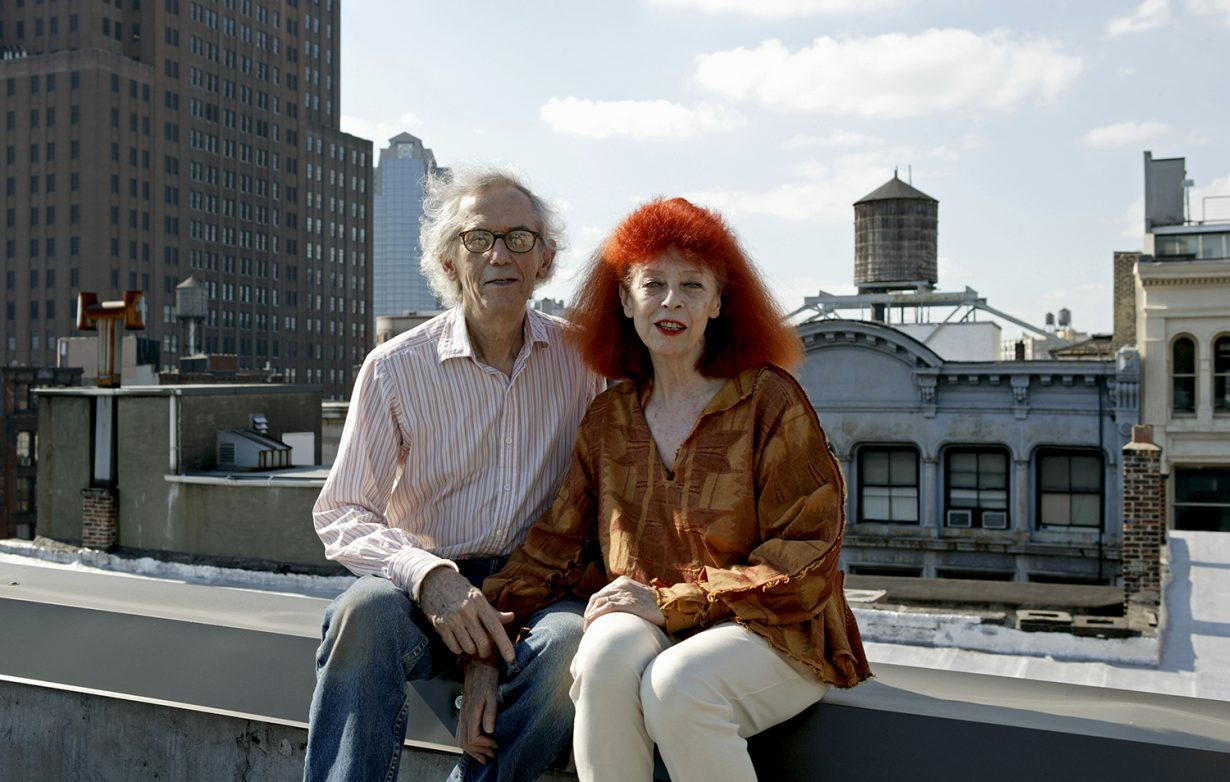
Genevieve, Emma and Ekaterina, among another hundred or so invigilators, are posted around the monument. There are 300 in all, working in shifts, for €12 per hour, slightly more than the minimum wage, during the 16 days of wrapping. Ekaterina is Bulgarian, normally a translator; Emma has just finished her studies in arts management, and this is her first job; Genevieve is still a student at the Beaux-Arts. About a quarter of those who come to see the work “are opposed to the wrapping”, they estimate, “but everyone is curious and has something to say about it”. On Sundays the huge plaza, freed of car traffic, becomes pedestrianised, permitting direct access to the monument (on other days, visitors must take a tunnel).

Along with their explanations, the invigilators hand out small squares of the wrapping fabric, blue on one side, aluminium-coated on the other. This outward-facing grey is designed to counter harsh weather, to withstand the abrasion of stone and cable, and also for “the use visitors will make of it”, who are invited to touch it, to sit on it, to activate the monument. Little by little, this usage causes the blue on the reverse to show through, which, along with the red cables, recalls the tricolour of the French flag. Christo loved France, the first country to welcome him, in 1958, when he fled Bulgaria, before becoming an American citizen in 1964. Jeanne-Claude was French, daughter of an army officer, stepdaughter of a general. This is what most surprises me about the wrapping: a patriotic thread runs through the fabric, and the effect of the three colours is a bit kitsch, a literal homage to the monument’s original purpose. The Arc de Triomphe is a hotspot of French national consciousness. The vault arches over the Tomb of the Unknown Soldier, buried there following the First World War, whose flame is relit each evening at 18.30 in a military ceremony (visitors are requested to exit the area at that time). The Gilets Jaunes graffitied the base of the monument in December 2018 and broke the moulding of one of the statues in the access tunnel.
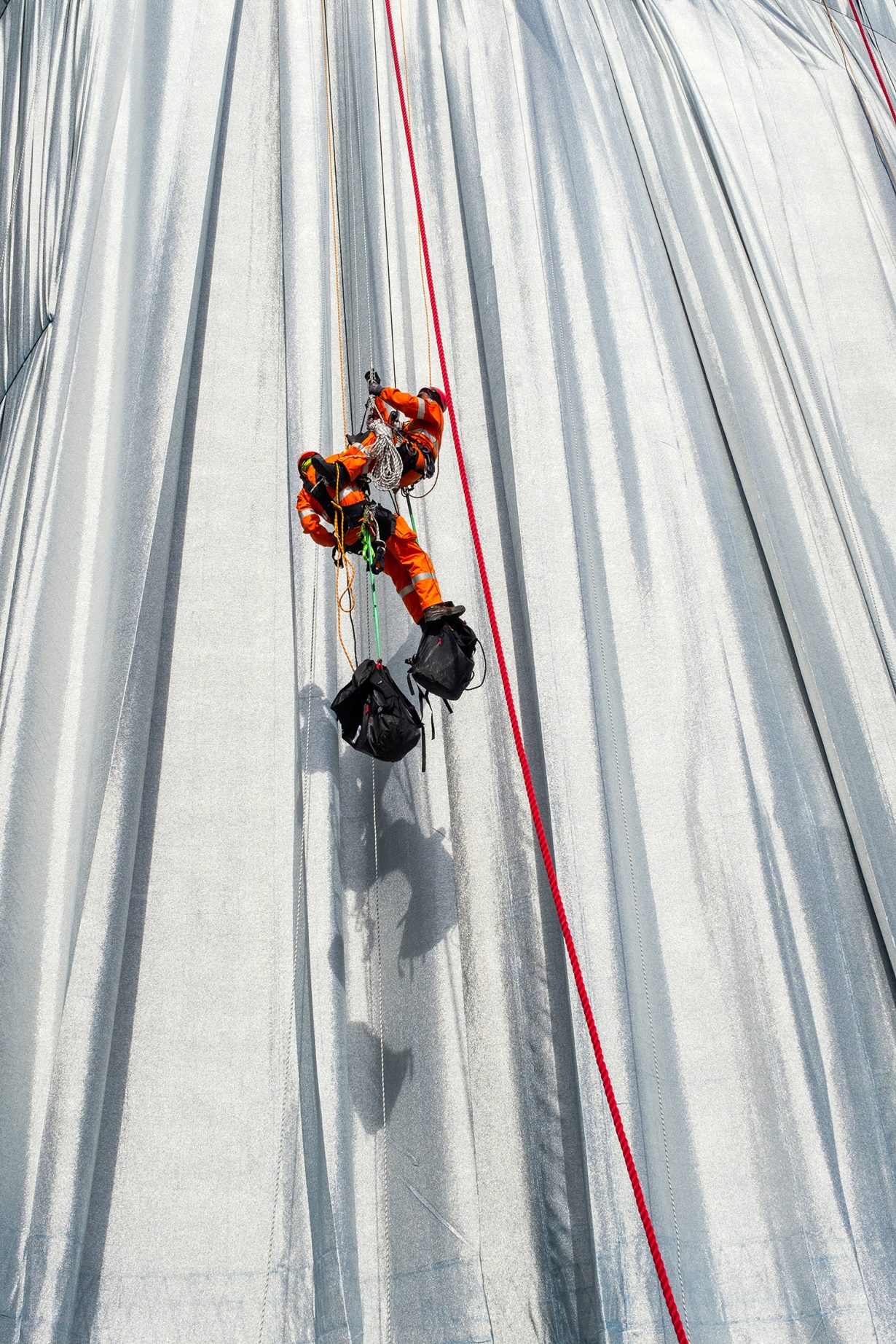
And yet a strong line emerges from this otherwise somewhat graceless, massive and dumbly triumphal monument. Some have compared its wrapped form to that of an elephant, with the grey of the fabric and the giant arch outlining a trunk and legs. To me the wrapping seems more like an ode to folds, à la Deleuze, in its very haute couture drapery, across which the changing autumn skies of Paris shimmer. Indeed, Issey Myaké has provided the fetching pleated outfits worn by the invigilators: Emma, Geneviève and Ekaterina tell me that they’ll get to keep them once the Arc is unwrapped. The Luxor Obelisk of the Place de la Concorde, at the end of the Champs Elysées, shines in the sun, exactly three kilometres away, the same distance as the length of rope used in the wrapping – a formal constraint which seems a little vain.
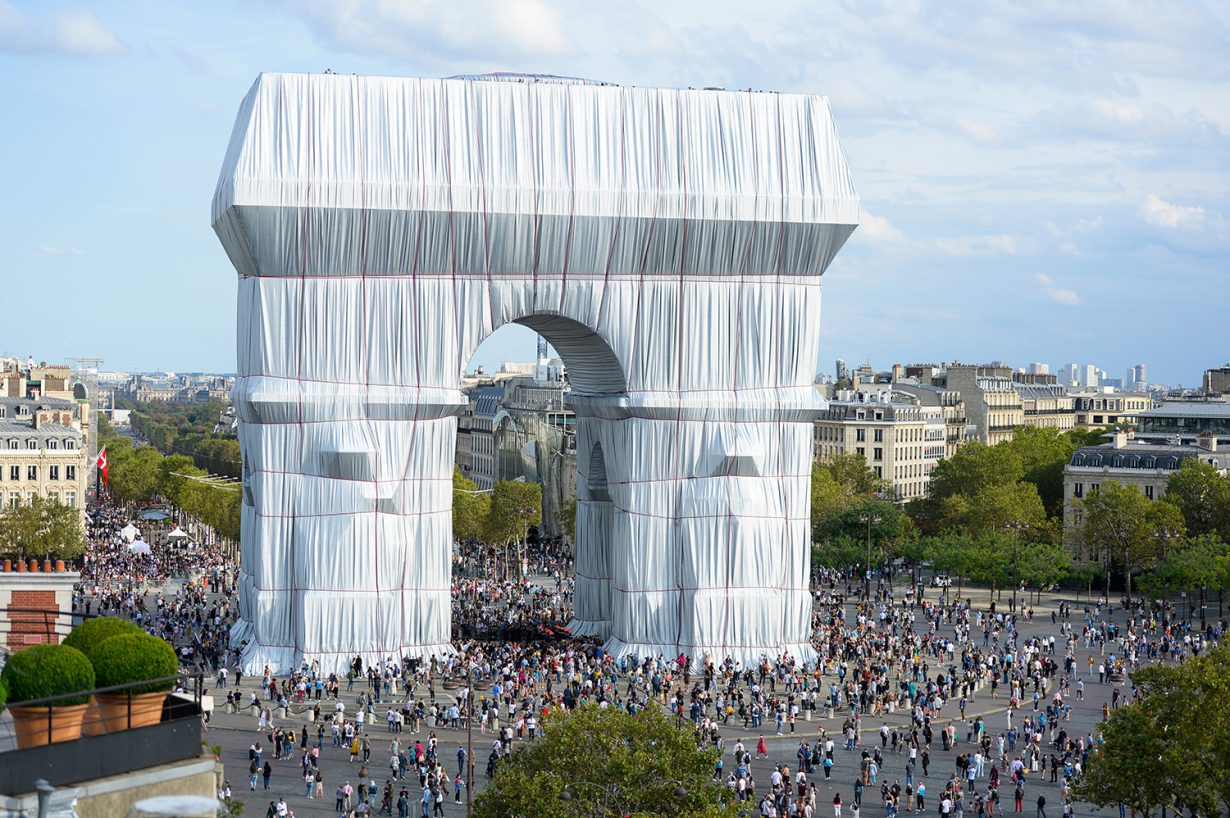
There’s something futile in the expenditure of energy incarnated in this big shiny rectangular block, this chocolate nestling in the over-expensive box that Paris has become, from which the little people are fleeing, driven out by sky-high rents. The wrapping has been coated with one kilogram of aluminium per square metre of fabric, but all the materials are, we’re assured by the invigilators, recycled and entirely recyclable. But the meaning of Christo and Jeanne-Claude’s work seems to have evolved since the famous wrapping of Paris’s Pont-Neuf (1985) or Berlin’s Reichstag (1995). Originally created, it seems to me, to emphasise the angular, stony solidity of our civilisation, these wrappings now evoke the billions of items of packaging that contain our convenience food – ones that even now are forming continents of waste in the oceans. The Arc de Triomphe has become a gigantic Maki roll, ready to be dropped into the mouth of a giant planet-eater.
Translated from the French by David Terrien and J.J. Charlesworth
